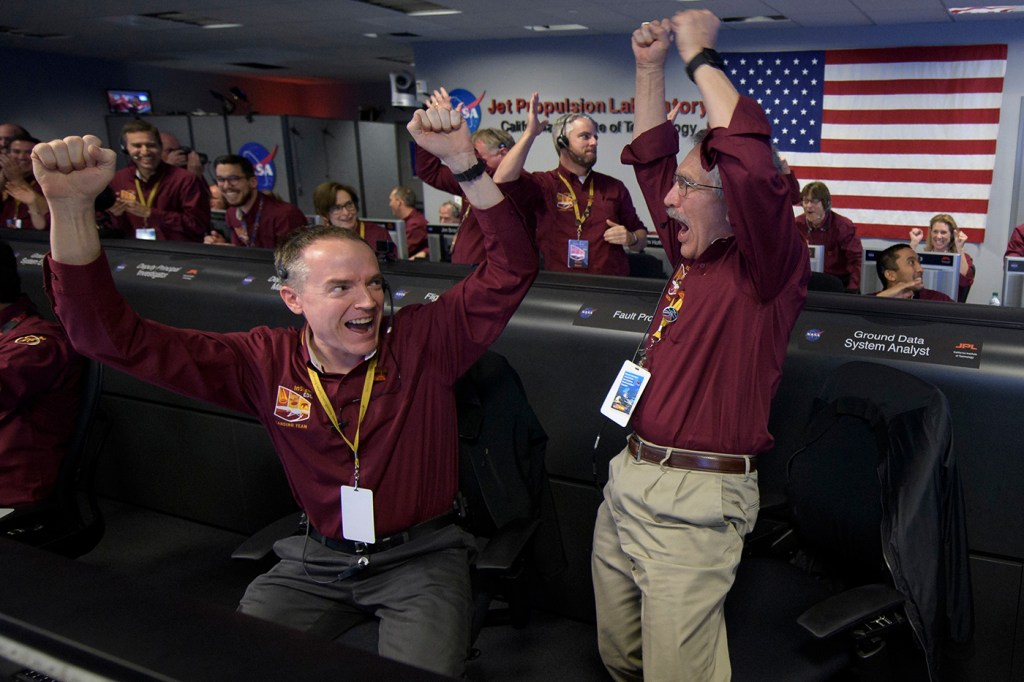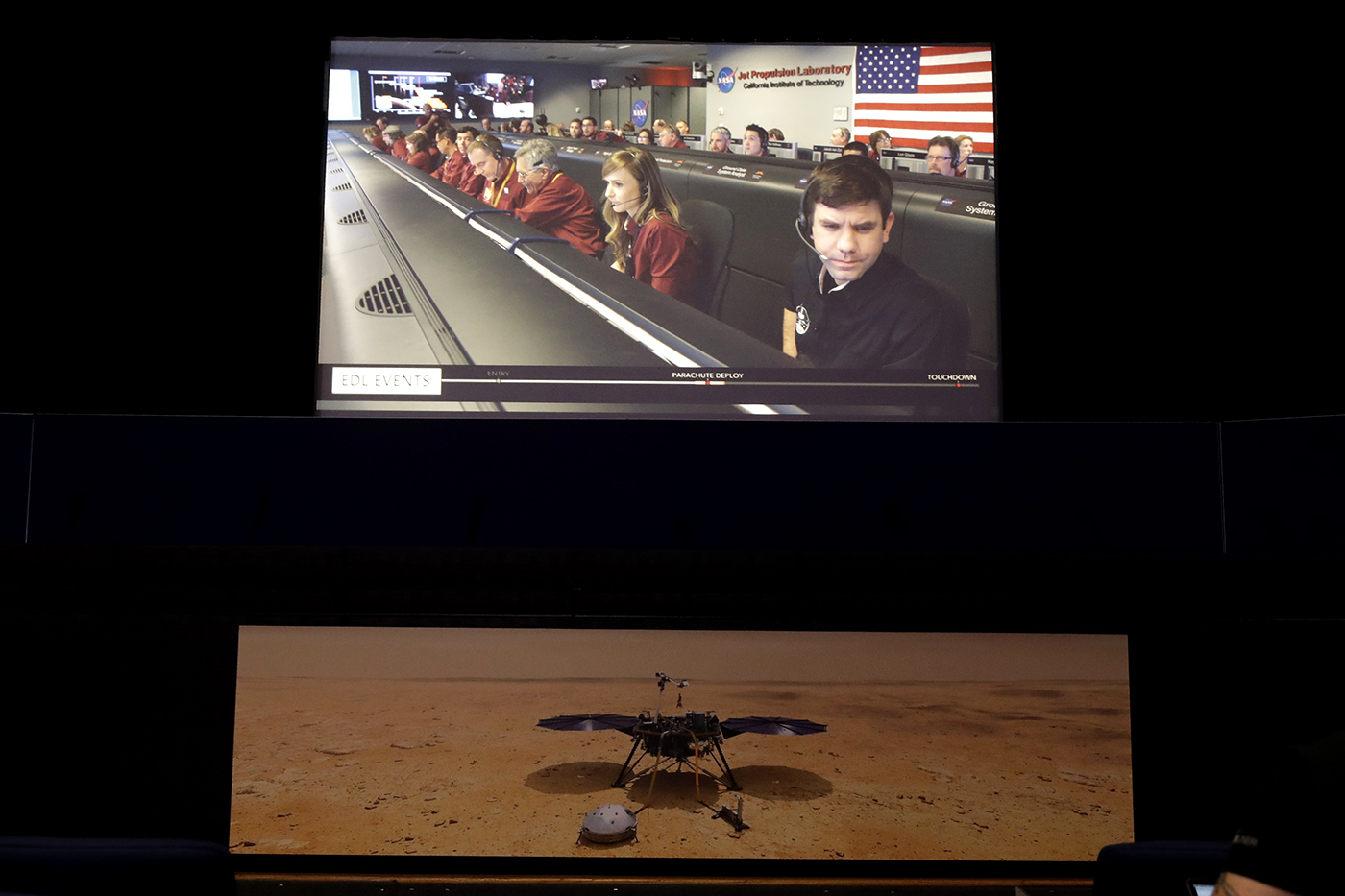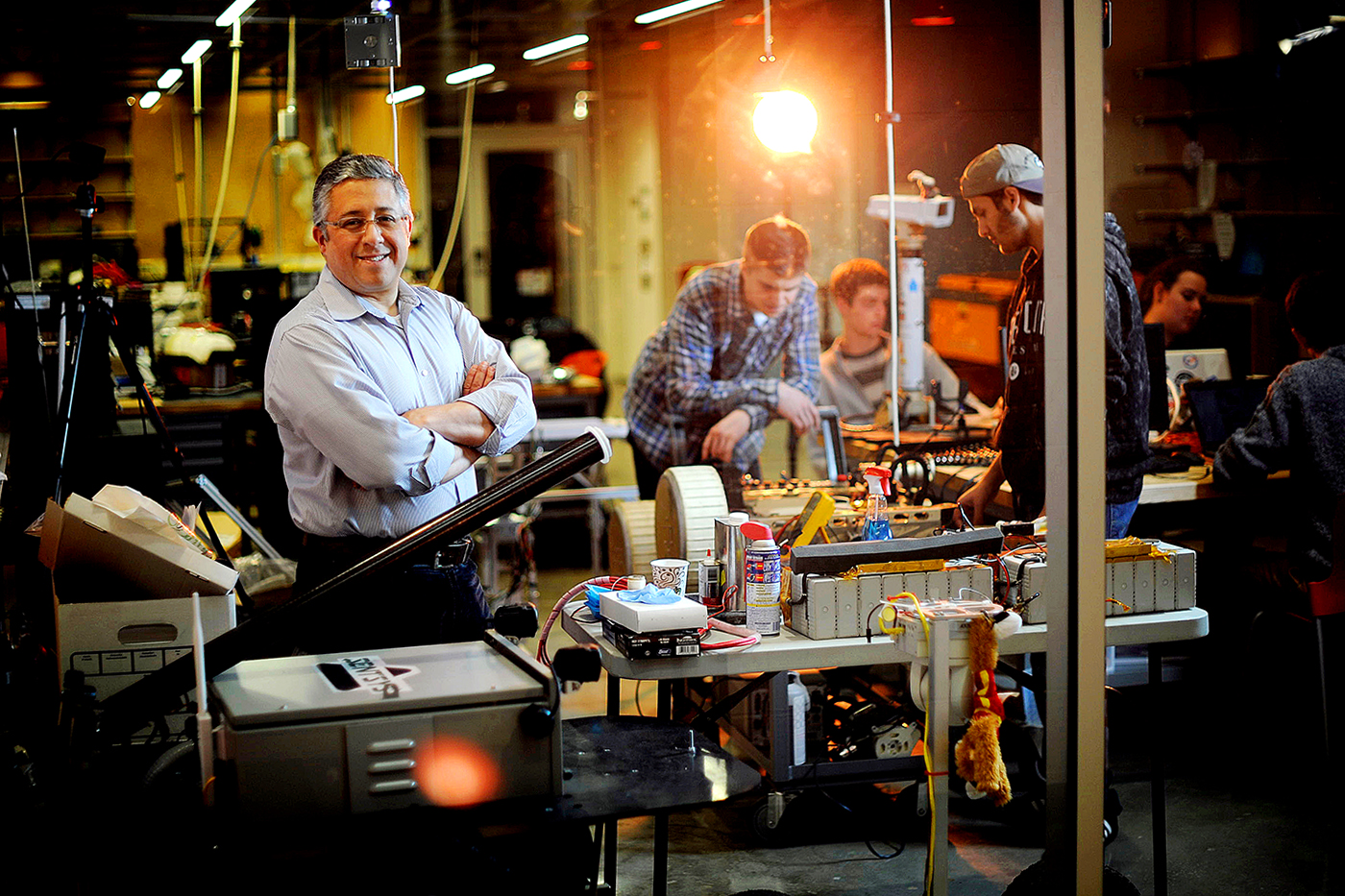InSight has landed on Mars. Now the real work begins.

It looked like a scene out of a Hollywood space flick: A roomful of NASA engineers and staff sat anxiously behind computer desks, staring at a screen. Then the room erupted into laughter, tears, hugs, and high fives. Except that instead of celebrating the heroic and unlikely rescue of Matt Damon, the cheers were for NASA’s InSight lander, a spacecraft designed to spend the next two years studying Mars, which had successfully parachuted to the surface of the planet.
Minutes later, the first photo of Mars transmitted from the lander arrived, and the room burst into another round of cheers. The photo was marred by hundreds of blurry specs of Martian dust (the transparent lens cover was still on the camera mounted under InSight’s landing deck), but beyond these cosmetic blemishes, the Mars surface was clear.
InSight’s six-month journey to Mars ended smoothly, just north of Mars’ equator on a large, flat plain known as Elysium Planitia.
The scientific journey for the first spacecraft to land on the red planet since the Curiosity Rover in 2012, however, is just beginning.
“It’s pretty amazing technology,” said Taskin Padir, associate professor of electrical and computer engineering at Northeastern.

A video feed of the InSight lander mission control room is seen at NASA’s Jet Propulsion Laboratory Monday, Nov. 26, 2018, in Pasadena, California. The NASA InSight lander arrived successfully on Mars’ surface. AP Photo/Marcio Jose Sanchez
Practically speaking, InSight is Mars’ first geophysicist. Other landers and rovers have looked at the geology of Mars, but InSight is the first mission to investigate the interior structure and composition of the planet. The data from InSight will help researchers understand how Mars was formed. These same processes shaped Earth and the other terrestrial planets more than 4 billion years ago.
“There is great interest in knowing what is underneath,” said Padir, who has done extensive research on robotics. “We found out a lot about what is on the surface from the visuals and what is accessible easily, but you always wonder what is under the cover, right? That’s a key capability right now with the InSight lander.”
InSight will be collecting data in three different ways: using a seismometer, a heat probe, and a radio science experiment.
The InSight seismometer is an upgraded version of the ones geophysicists use here on Earth. It will detect the waves from any tectonic movement in Mars (delightfully termed “marsquakes”), as well as from meteor strikes. Once InSight’s robotic arm has placed the seismometer on the planet’s surface, the arm will cover the device with a wind and thermal shield to help protect it from weather-related interference.

Taskin Padir, an associate professor of electrical and computer engineering at Northeastern. Photo by Matthew Modoono/Northeastern University
The heat probe will also be placed on the planet’s surface, but then it will dig itself about 16 feet deep into Mars’ crust. This is the furthest we have ever delved into Mars’ surface. Mars is still cooling, and the probe will measure the heat leaving the planet’s core. This will help scientists determine whether Earth and Mars are made from the same material, and how active Mars really is under the surface.
The radio science experiment is essentially using antennas built into the lander to bounce back signals sent from Earth. This will give researchers the precise location of InSight, helping them track any wobbles in Mars’ orbit, which would hint at whether the planet has a solid or liquid core.
All of this, hopefully, will provide a little insight into Earth’s own formation.
Don’t expect revelations to come pouring in from Mars right away, though. All the pieces have to be set up perfectly to work, so the NASA team will be moving slowly. The researchers will run simulations on their model at NASA’s Jet Propulsion Laboratory before sending instructions to InSight.
“It will be cautious deployment inching towards the ultimate step that they want to reach,” Padir said.
For now, the researchers can toast to the success of sending a 1,500-pound lander on a 300 million-mile journey to a perfect touch down.
“This is an exciting day for NASA, and for many others in space exploration,” Padir said. “I think the future is very bright.”





